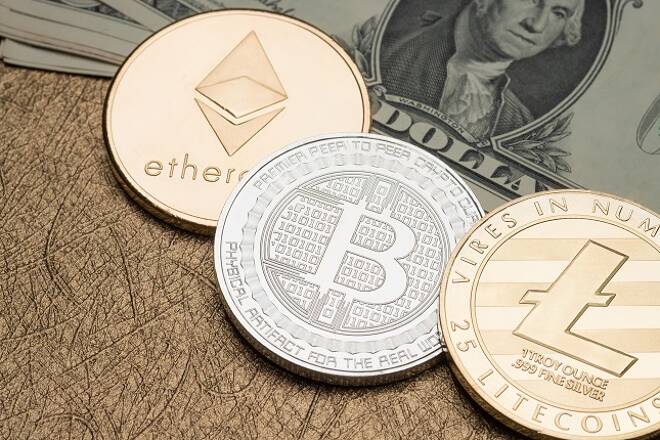Advertisement
Advertisement
Bitcoin and Ethereum – Weekly Technical Analysis – November 9th, 2020
By:
It's a relatively bullish start to the week. Avoiding the week's pivot levels would support a break out from last week's highs to bring resistance levels into play.
Bitcoin
Bitcoin rallied by 12.69% in the week ending 8th November. Following on from a 5.52% gain from the week prior, Bitcoin ended the week at $15,500.0.
It was a bearish start to the week. Bitcoin fell to a Monday intraweek low $13,207.0 before making a move.
Steering clear of the first major support level at $13,006, Bitcoin rallied to a Friday intraweek high $15,888.0.
Bitcoin broke through the first major resistance level at $14,280 and the second major resistance level at $14,805.
Falling short of $16,000 levels, Bitcoin slid back to sub-$14,500 levels on Saturday before a bullish end to the week.
A Sunday recovery saw Bitcoin break back through the second major resistance level to wrap up the week at $15,500 levels.
5 days in the green that included a 10.03% rally on Friday and a 4.41% rally on Sunday delivered the upside for the week. A 4.67% slide on Saturday limited some up the upside for the week, however.
For the week ahead
Bitcoin would need to avoid a fall through the $14,865 pivot to support a run the first major resistance level at $16,523.
Support from the broader market would be needed for Bitcoin to break out from last week’s $15,888.0 high.
Barring an extended crypto rally, the first major resistance level would likely cap any upside.
In the event of another breakout, Bitcoin could test resistance at $17,000 before any pullback. The second major resistance level sits at $17,546.
Failure to avoid a fall through the $14,865 pivot would bring the first major support level at $13,842 into play.
Barring an extended sell-off, however, Bitcoin should steer clear of sub-$13,500 support levels. The second major support level sits at $12,184.
At the time of writing, Bitcoin was up by 0.11% to $15,517.0. A mixed start to the week saw Bitcoin fall to an early Monday morning low $15,424.0 before striking a high $15,608.0.
Bitcoin left the major support and resistance levels untested at the start of the week.
Ethereum
Ethereum surged by 14.54% in the week ending 8th November. Reversing a 2.32% fall from the previous week, Ethereum ended the week at $454.61.
It was a bearish start to the week. Ethereum fell to a Tuesday intraweek low $370.50 before making a move.
The pullback saw Ethereum fall through the first major support level at $376.00.
Steering clear of the 38.2% FIB of $367, Ethereum rallied to a Saturday intraweek high $468.98.
Ethereum broke through the first major resistance level at $415 and the second major resistance level at $432.
Falling short of the third major resistance level at $471, Ethereum eased back to wrap up the week at $454 levels.
5-days in the green that included a 9.46% jump on Friday and a 4.30% rally on Sunday delivered the upside for the week. A 3.42% fall on Monday and a 4.55% slide on Saturday reversed some of the gains, however.
For the week ahead
Ethereum would need to avoid a fall through the $431 pivot level to support a run at the first major resistance level at $492.
Support from the broader market would be needed, however, for Ethereum to break out from last week’s $468.98 high.
Barring another extended crypto rally, the first major resistance level and resistance at $500 would likely cap any upside.
In the event of a breakout, Ethereum could test the second major resistance level at $530 before any pullback. The 62% FIB of $543 would likely cap any upside, however.
Failure to avoid a fall through the $431 pivot would bring the first major support level at $394 into play.
Barring an extended crypto market sell-off, however, Ethereum should steer clear of sub-$400 levels. The second major support level sits at $333.
At the time of writing, Ethereum was up by 0.19% to $455.48. A mixed start to the week saw Ethereum fall to an early Monday morning low $451.59 before rising to a high $458.40.
Ethereum left the major support and resistance levels untested at the start of the week.
About the Author
Bob Masonauthor
With over 28 years of experience in the financial industry, Bob has worked with various global rating agencies and multinational banks. Currently he is covering currencies, commodities, alternative asset classes and global equities, focusing mostly on European and Asian markets.
Did you find this article useful?
Latest news and analysis
Advertisement
